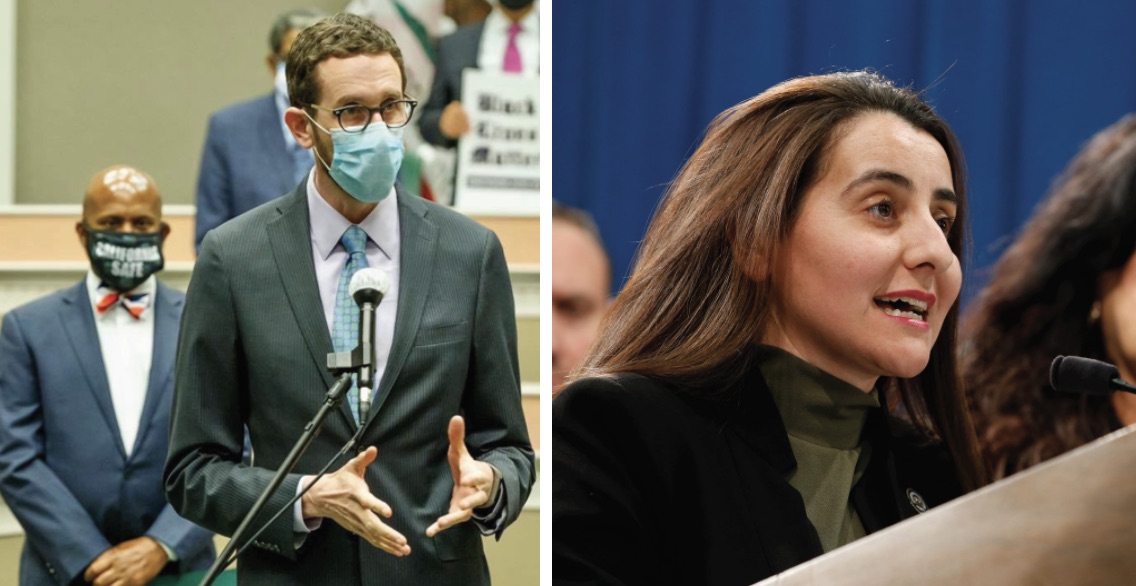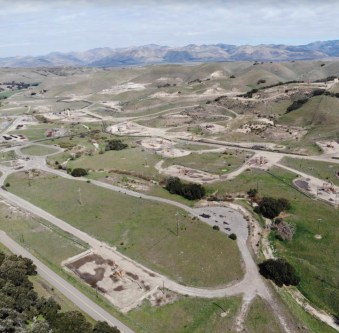Will Cyclic-Steaming Bite the Dust?
Unconventional Oil Extraction Bill Proposes a 2022 Cutoff Date for Permits

Mike Lopez represents the United Association of Plumbers and Pipefitters, Local 114, based in Buellton. He was a vocal supporter of new oil development in Cat Canyon because it would mean union jobs, but all three projects withdrew last year. He confessed to feeling torn between his union duties and the real-world negative impacts of climate change. “Good God,” he would wonder. “Are they right? Are we doing the right thing?”
A new bill trekking through California’s Legislature would end oil extraction techniques like cyclic-steam injection, which is used in Cat Canyon. But that’s the wrong solution, Lopez said.

“Who’s for a dirty planet?” he asked. “Nobody is. But before you get rid of all fossil-fuel cars, every piece of equipment or plastic made from oil, you’ve got to build toward a future. We don’t have anything legitimate to replace it.” He pointed to the toxins created by lithium mining — used in making automobile batteries — and solar panel manufacturing
Lopez has a good sense of the long game. His family traces back to Santa Barbara’s Presidio in 1792, when a distant forebear traveled here from Mexico and married an indigenous woman: “You know, the tan guys with the skirts. That was us,” he said, chuckling.
If Senate Bill 467 passes the California Legislature, unconventional oil production methods like hydraulic fracking, acid well stimulation, steam or water flooding, and cyclic-steam injection statewide would be a thing of the past after 2027. The methods that soften and pull Santa Barbara County’s heavy crude from far below the earth are the targets of the new bill, written by State Senator Scott Wiener, who introduced it last week with State Senator Monique Limón. It has the support of Santa Barbara’s Environmental Defense Center (EDC), which has fought the Cat Canyon oil projects over the past decade.
“The intent of the bill is simple,” said Tara Messing, an EDC attorney: “To protect drinking water and air, and to ensure a healthy community and environment.”
The hills around Cat Canyon, which are west of Santa Maria in Santa Barbara County’s backcountry, are dotted with hundreds of drilling pads, rigs, and wells. EDC had worked to prevent the addition of 760 more wells in extraction projects proposed by Aera Energy, Petrorock, and Terracore, all of which pulled the plug in 2020.
The canyon’s existing and historic oil operations put it in the top one percent for groundwater threats as measured by the state Office of Environmental Health Hazard Assessment, Messing noted, and they lie above the aquifer for residential communities like Sisquoc, Garey, and Santa Maria. “These are all dangerous and risky oil extraction methods,” Messing said, adding that water contamination found in the Orcutt area from oil processes was being investigated by the U.S. Geological Survey.
Get the top stories in your inbox by signing up for our daily newsletter, Indy Today.
The bill started its life after Governor Newsom suggested the Legislature look to ban fracking. “Fracking is dangerous and needs to be addressed,” Messing agreed, but steam injection and flooding were included in the bill “because we are seeing the same impacts as with fracking.”
Among them are airborne particulate matter smaller than the width of a hair — known as PM2.5 — that are created during the industrial processes associated with oil production. The bill seeks to create a 2,500-foot buffer between wells and schools, residences, and health-care or long-term-care facilities, Messing explained. Even COVID-19 has entered the picture; she cited a 2020 Harvard University study that correlated historic exposure to fine particulates with higher death rates at a county level from the disease.
If the bill passes, its provisions would block new permits and those up for renewal as of January 1, 2022, and impose a total ban on extreme-extraction procedures five years later. The timing couldn’t be worse, the Western States Petroleum Association said.
“Our state is in the midst of a jobs and economic disaster due to COVID. We can’t get businesses open and people back to work or even figure out how to pay unemployment benefits to millions. Yet these lawmakers are focused on eliminating our ability to provide safe, affordable, and reliable energy for families and businesses under environmental standards that are already the toughest in the world,” said Catherine Reheis-Boyd, CEO for Western States.

The setback buffer would impact all production, Western States spokesperson Ben Oakley stated, and that would affect nearly 6,500 industry workers on the Central Coast. “The ban affects future production,” he said, “and the setback requirements affect current operations and create a ‘takings’ concern that could cost the state billions, according to a legislative study.”
The bill also prioritizes oil-field workers for the decommissioning jobs that would necessarily occur as wells were closed down. Such “odd jobs” were hardly a “just transition” for well-paying oilfield work, Reheis-Boyd objected.
Abandoned wells and “orphan” wells, or those whose operators had declared bankruptcy, “add another layer of complexity to these sites,” Messing acknowledged. Cleaning up and closing down the sites could be an issue if the bonds posted by oil companies don’t cover the work needed to abandon dormant wells properly, she noted.
A companion bill by Sen. Limón could be a solution: SB 47 would add an “industry-funded mechanism to employ skilled and trained workers to plug deserted wells” and increase the state’s spending authority to plug deserted wells from $3 million to $10 million annually, saving any unspent monies up to $100 million.
“I often say, ‘If there’s not a bill, there’s not a conversation,’” said Sen. Limón. That conversation on both bills will occur in Senate and Assembly committees during the current two-year session, with amendments already peppering the text. “Oil production in and near our communities has had long-lasting health impacts,” Limón added. “This bill continues robust policy conversations on fossil fuels and alternative energy production that have been going on for decades. Even more important is that we have these conversations simultaneously as President Biden takes action on pausing new oil and natural gas leases on public lands or offshore waters.”
Mike Lopez observed that the men and women in Local 114 hadn’t worked the oilfields in Santa Barbara County for 30 years; pipefitting skills are needed to construct new projects, not day-to-day operations. Likewise, the decommissioning process would not employ them. But eliminating oil production in a place like Santa Barbara County with strong environmental rules was not preferable to importing oil from places that lack such regulations.
“The level of prejudice against the oil industry is unbelievable,” he said. “But if you’re going to put them out of business, do it organically. Have a plan that makes economic sense; don’t just scare people.
“Take whaling,” he continued. “They hunted whales for oil, but then they started using naphtha and stopped hunting whales, and eventually they used natural gas. But they sure didn’t sit around in the dark until something else came along.”
It’s early days to test the prevailing winds on the new Senate bill, which doesn’t address conventional oil drilling, just the extreme techniques used to extract California’s harder-to-reach oil sources underground. Nonetheless, movements across the state are intent on keeping the lights on with carbon-free sources, but that’s a whole ‘nother story.
Every day, the staff of the Santa Barbara Independent works hard to sort out truth from rumor and keep you informed of what’s happening across the entire Santa Barbara community. Now there’s a way to directly enable these efforts. Support the Independent by making a direct contribution or with a subscription to Indy+.




You must be logged in to post a comment.